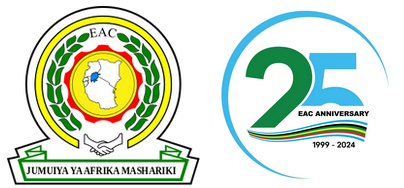
Customs
Enabling the EAC Partner States to enjoy economies of scale, with a view to supporting the process of economic development through the establishment of a Single Customs Territory.
The current EAC regional integration initiative has its origin in the Mediation Agreement for Division of Assets and Liabilities of the East African Community which collapsed in 1977.
In that Agreement, signed on 14 May 1984, there was a provision that the three East African countries (Kenya, Tanzania and Uganda) could explore areas of future co-operation. It was on that basis that the then three Heads of State held a mini-Summit on the sideline of the Commonwealth Heads of Government and States Summit held in Harare in November 1991, during which they announced their intention to re-launch the East African Co-operation.
On 30 November 1993, the three Heads of State signed an Agreement on the establishment of the Permanent Tripartite Commission for East African Co-operation. However, full fledged co-operation took root after the launching of the Secretariat in Arusha on 14 March 1996.
At the on-set, East African Co-operation generally viewed itself as a fast track for regional integration in the Eastern and Southern African region, particularly as fast tracking the COMESA integration initiative.
This was out of the fact that the 3 Member states - Kenya, Tanzania and Uganda - were also members of COMESA and at that time were trading under the COMESA trade regime. Within the COMESA trade regime, Kenya by 1999 had reached a tariff reduction of 90 per cent while both Tanzania and Uganda were at 80 per cent. Therefore, Kenya was granting the other two sister states preferential market access at 90 per cent tariff reduction.
However, following issuance of a withdrawal notice from COMESA by Tanzania in September 1999, the three EAC Partner States agreed within the framework of the Treaty for the Establishment of the East African Community, signed on 30 November 1999 and came into force on 7 July 2000, to continue trading preferentially along the trade regime applicable at the time of signing of the Treaty.
A Protocol for the Establishment of the East African Community Customs Union was signed by the three East African Heads of State on 2 March 2004 in Arusha, Tanzania.
The Republics of Rwanda and Burundi joined the Customs Union in 2008 and started applying its instruments in July 2009.
Objectives of the Customs Union
The objectives of the EAC Customs Union are:
- To further liberalise intra-regional trade in goods on the basis of mutually beneficial trade arrangements among Partner States;
- To promote efficiency in production within the Community;
- To enhance domestic, cross-border and foreign investment in the Community; and
- To promote economic development and diversification in industrialisation in the Community.
Scope of Co-operation
Co-operation will apply to any activity undertaken by the EAC Partner States in the field of Customs Management, and includes the following:
- Customs administration;
- Matters concerning trade liberalisation;
- Trade related aspects including the simplification and harmonisation of trade documentation, customs regulations and procedures;
- Trade remedies;
- National and joint institutional arrangements;
- Training facilities and programmes on customs and trade;
- Production and exchange of customs and trade statistics and information; and
- The promotion of exports
Contents of the Protocol
The Protocol consists of nine parts as follows:
Part A: Interpretation
Part B: Establishment of the East African Community Customs Union
Part C: Customs Administration
Part D: Trade Liberalisation
Part E: Trade Related Aspects
Part F: Export Promotion Schemes
Part G: Special Economic Zones
Part H: Exemption Regimes
Part I: General Provisions
